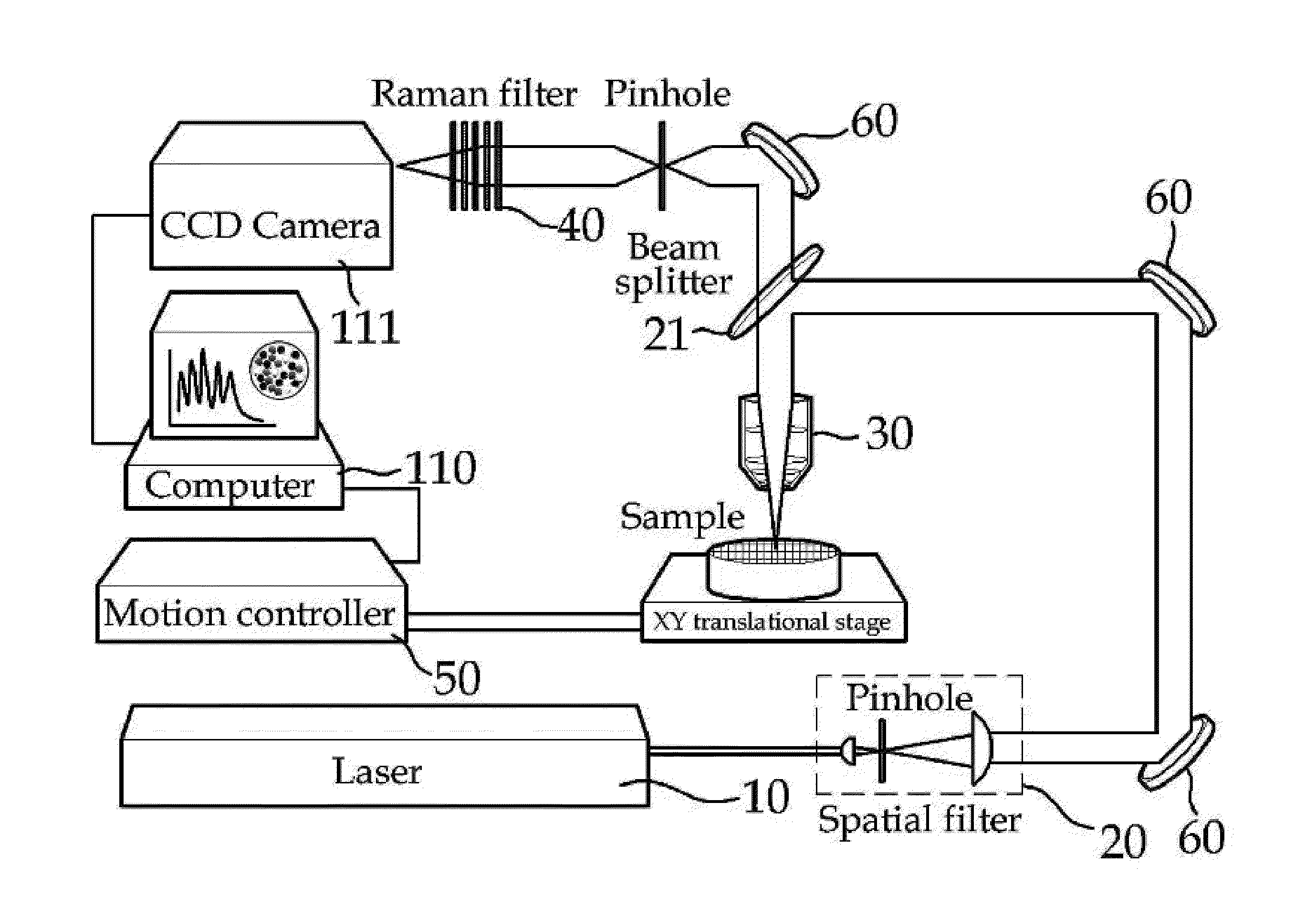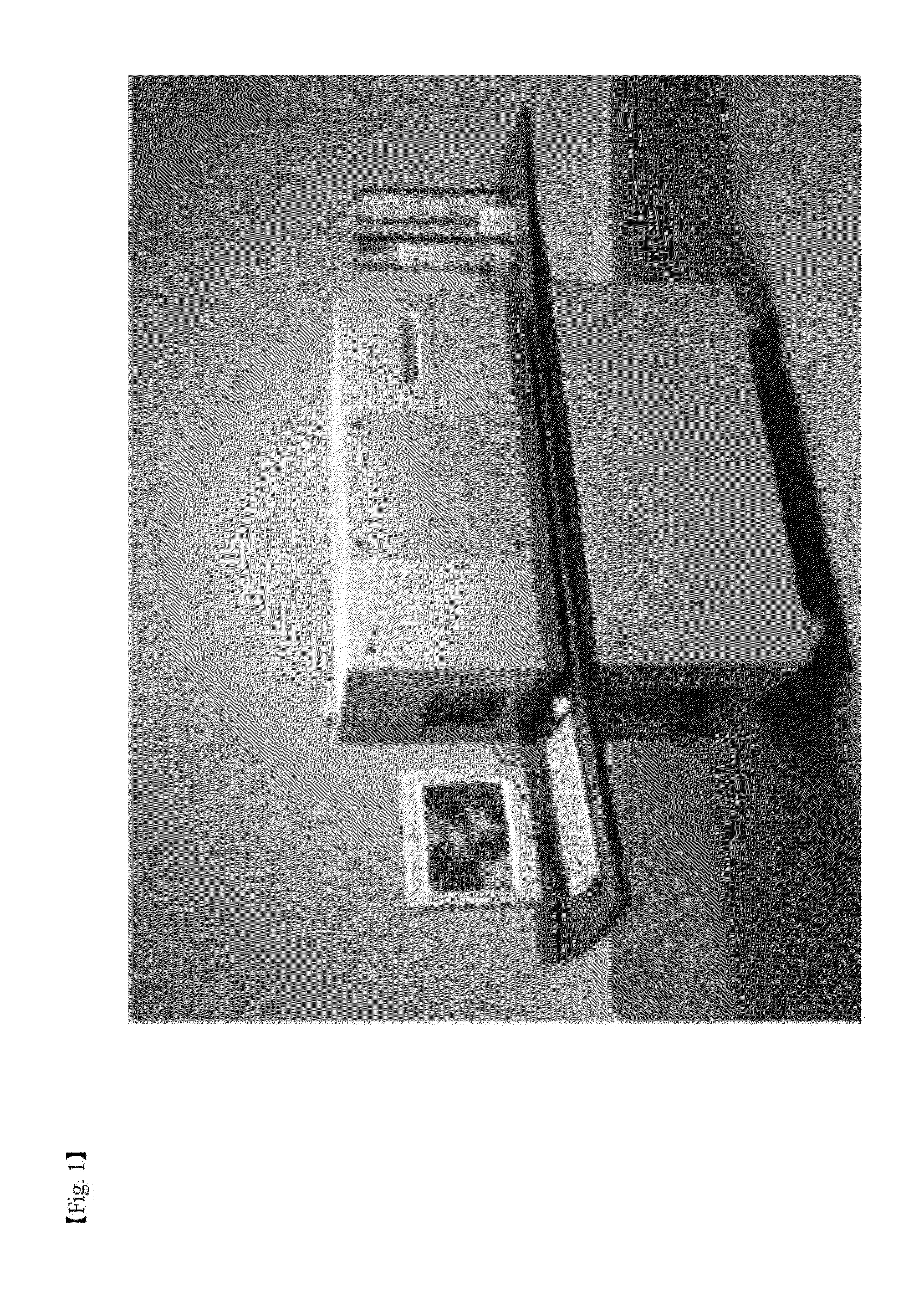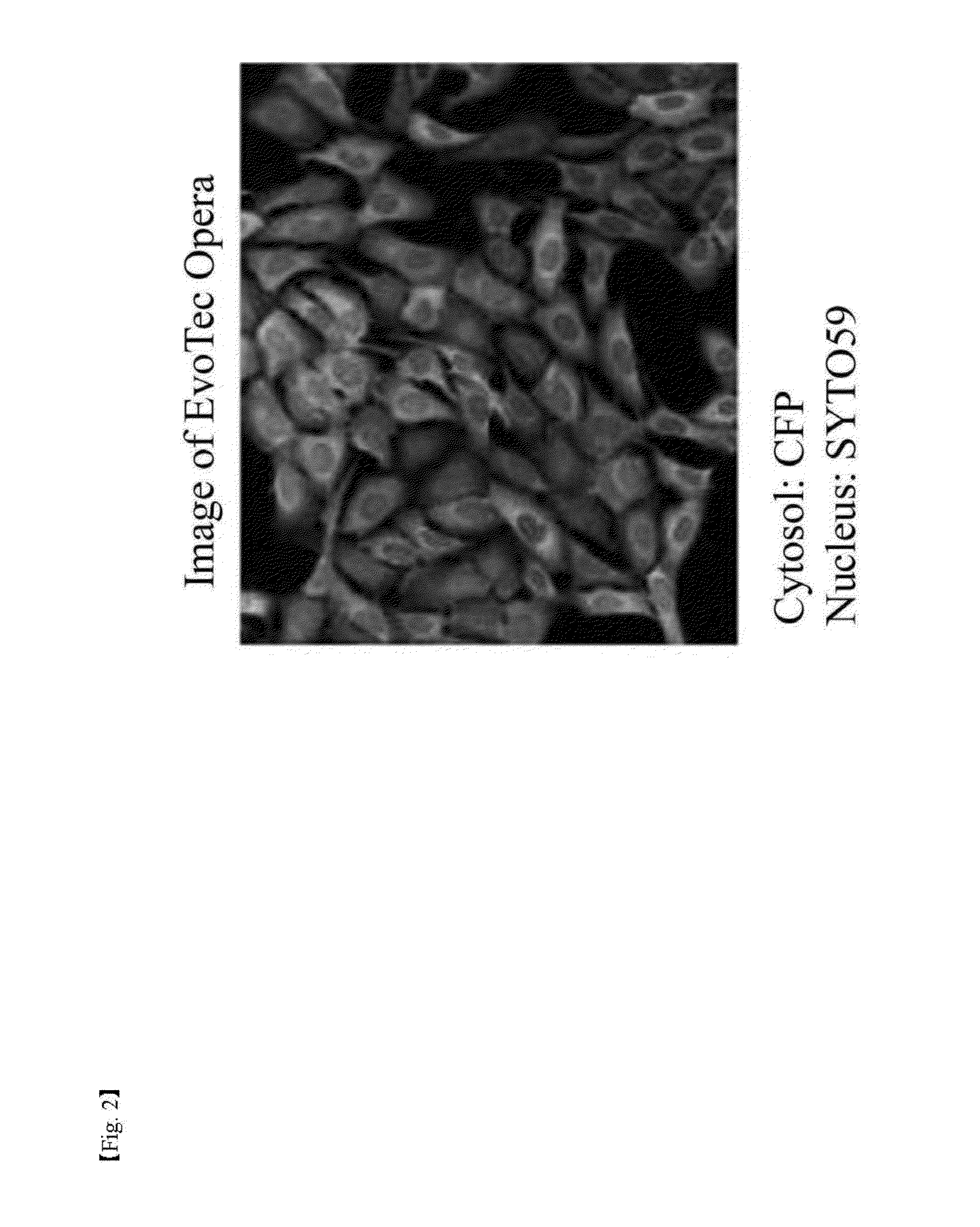High-speed screening apparatus for a raman analysis-based high-speed multiple drug
a screening apparatus and high-speed technology, applied in the field oframan analysis-based screening apparatuses for multiple drugs, can solve the problems of reducing the laboratory space necessary for instruments, disadvantageous in space, time and finances, and time taken, and achieves strong surface-enhanced raman scattering signals, high speed, and high reproducibility
- Summary
- Abstract
- Description
- Claims
- Application Information
AI Technical Summary
Benefits of technology
Problems solved by technology
Method used
Image
Examples
synthesis examples 1 to 3
Synthesis of Core-Gap-Shell Nanoparticles
[0104]A DNA strand was used as a Raman-dye modification platform with highly accurate position-controlling capability to synthesize an NNP (nanobridged nanogap particle) with a nanobridge-supported interior gap, as follows.
[0105]DNA-modified gold nanoparticles (20 nm in diameter; DNA sequences: [3′-HS—(CH2)3-(Dabcyl)-A10-PEG18-AAACTCTTTGCGCAC-5′] for Synthesis Example 1, [3′-HS—(CH2)3-(Cy3)-A10-PEG18-AAACTCTTTGCGCAC-5′] for Synthesis Example 2, and [3′-HS—(CH2)3-(TAMRA)-A10-PEG18-AAACTCTTTGCGCAC-5′] for Synthesis Example 3) were prepared according to literature procedures (S. J. Hurst, A. K. R. Lytton-Jean, C. A. Mirkin, Anal. Chem. 78, 8313 (2006)). To form gold shells around these DNA-modified gold nanoparticle cores, DNA-modified gold nanoparticles in a phosphate-buffered solution (0.3 M NaCl, 10 mM PB, pH 7.4) were reacted with a gold precursor (HAuCl4, a reductant (NH2OH—HCl) and 1% poly-N-vinyl-2-pyrrolidone (PVP; MW 40,000), followed b...
synthesis examples 4 to 6
Synthesis of PEG-Coated Core-Gap-Shell Nanoparticles
[0107]PEG was applied to the shell surface of each of the nanoparticles synthesized in Synthesis Examples 1 to 3 so as to render the particles well-dispersible in a cell culture media and thus more suitable for use in cellular experiments (“Dabcyl” (Synthesis Example 4), “Cy3” (Synthesis Example 5), “TAMRA” (Synthesis Example 6); refer to FIG. 9).
[0108]mPEG-SH (MW ˜5 kDa) was applied to the shell surface of the nanoparticles to prepare PEG-coated gold-silver core-shell nanoparticles (Synthesis Examples 4 to 6) with reference to ‘W. Peter Wuelfing, Stephen M. Gross, Deon T. Miles, and Royce W. Murray, J. Am. Chem. Soc. 120, 12696 (1998)’.
experimental example 1
Evaluation of Surface-Enhanced Raman Scattering Spectrum
[0109]SERS spectra were recorded by the apparatus of the present invention, that is, the in-house nano-Raman spectroscope equipped with an inverted optical microscope (Axiovert 200, Zeiss) using the nanoparticles synthesized in Synthesis Examples 1 to 3.
[0110]First, 20 μL of each of the solutions containing the nanoparticles of Synthesis Examples 1 to 3 was applied to a cover glass slip by spin coating to construct a sample for spectral measurement. An excitation laser beam with a wavelength of 660 nm was directed at an energy of from 50 nW to 1 mW into an oil-immersion microscope objective (×100, 1.3 numerical aperture; ×50, 0.5 numerical aperture; Zeiss), which focuses the beam into the sample to generate Raman signals. The background Raman signals were collected on a liquid-nitrogen-cooled (−125° C.) CCD (charge-coupled device). All of the data was baseline-corrected to afford SERS spectra. The results are shown in FIG. 5.
[0...
PUM
| Property | Measurement | Unit |
|---|---|---|
| wavelength | aaaaa | aaaaa |
| wavelength | aaaaa | aaaaa |
| diameter | aaaaa | aaaaa |
Abstract
Description
Claims
Application Information
 Login to View More
Login to View More - R&D
- Intellectual Property
- Life Sciences
- Materials
- Tech Scout
- Unparalleled Data Quality
- Higher Quality Content
- 60% Fewer Hallucinations
Browse by: Latest US Patents, China's latest patents, Technical Efficacy Thesaurus, Application Domain, Technology Topic, Popular Technical Reports.
© 2025 PatSnap. All rights reserved.Legal|Privacy policy|Modern Slavery Act Transparency Statement|Sitemap|About US| Contact US: help@patsnap.com



